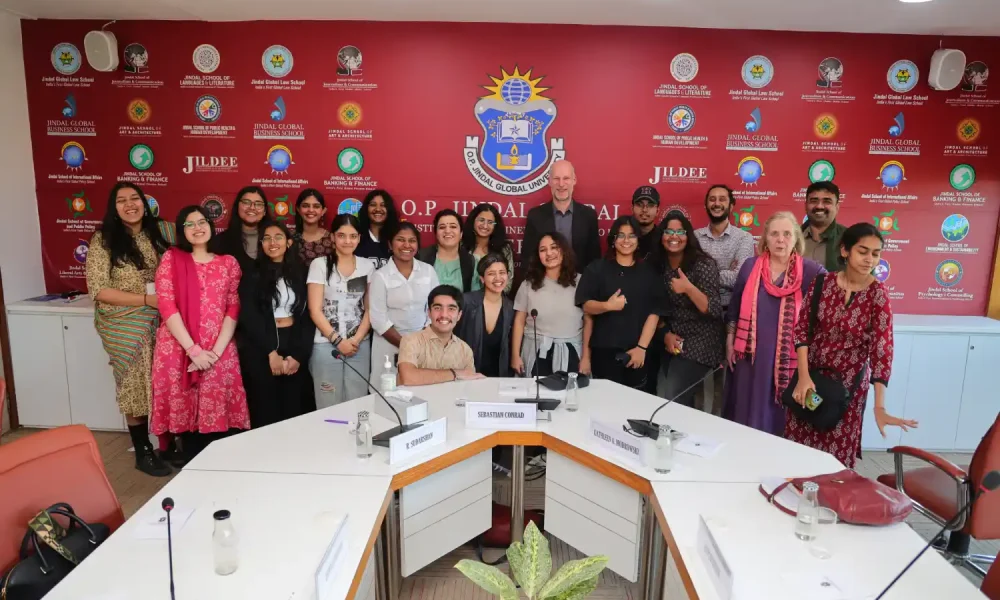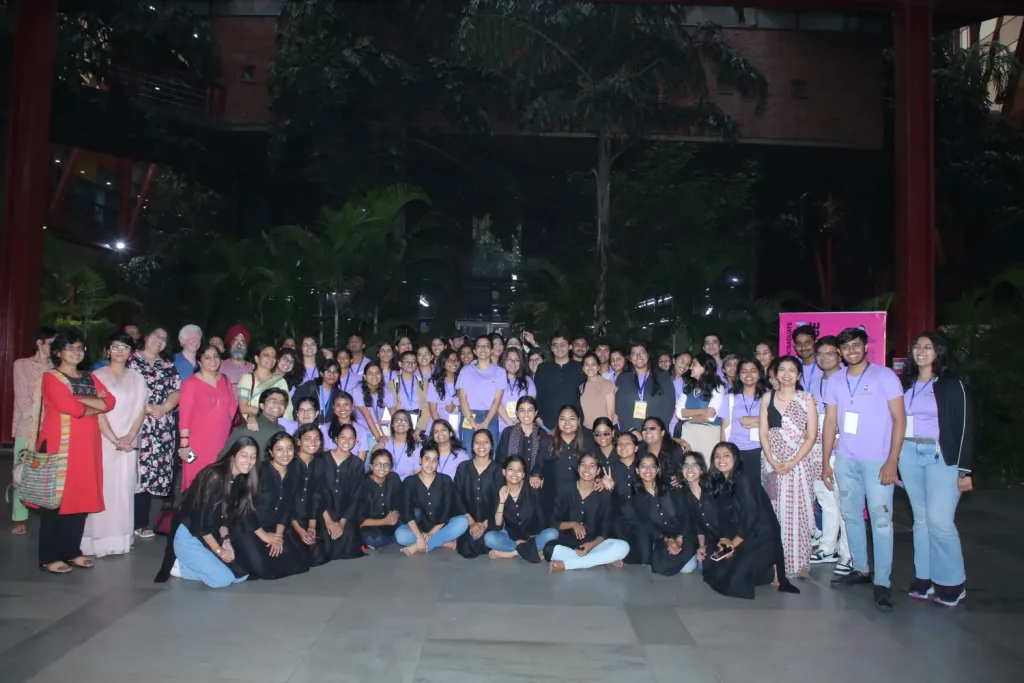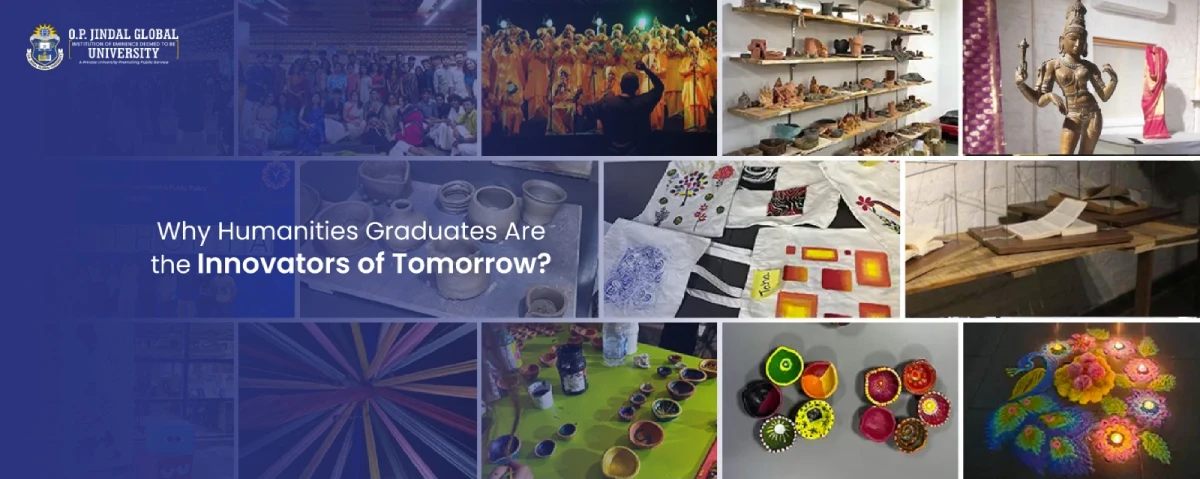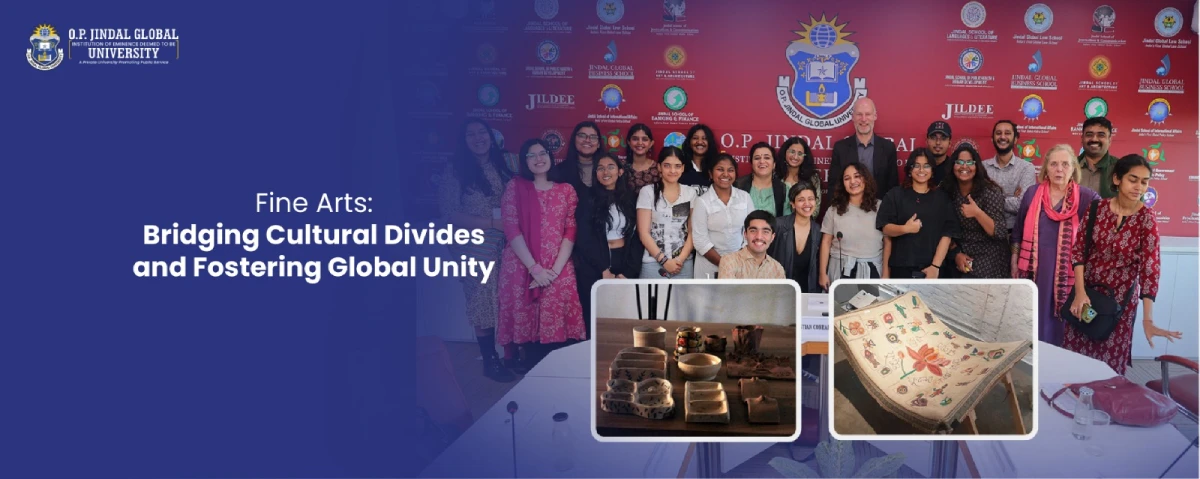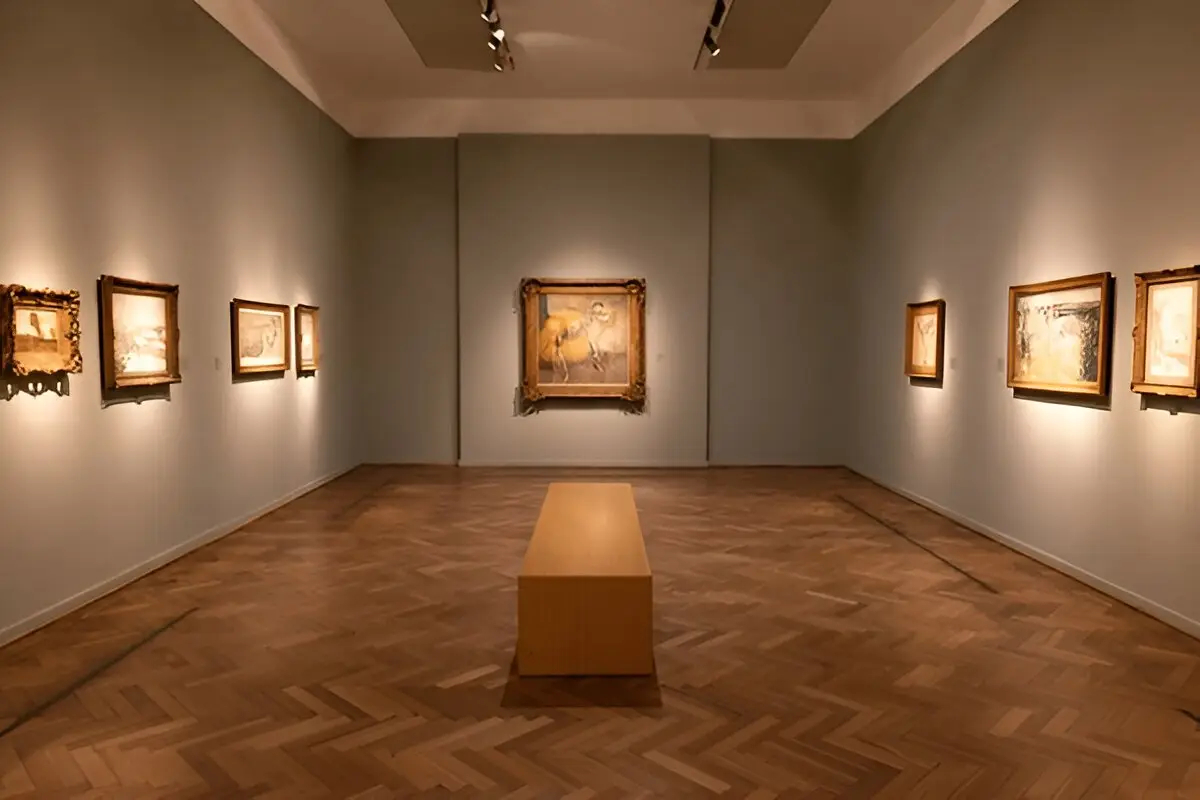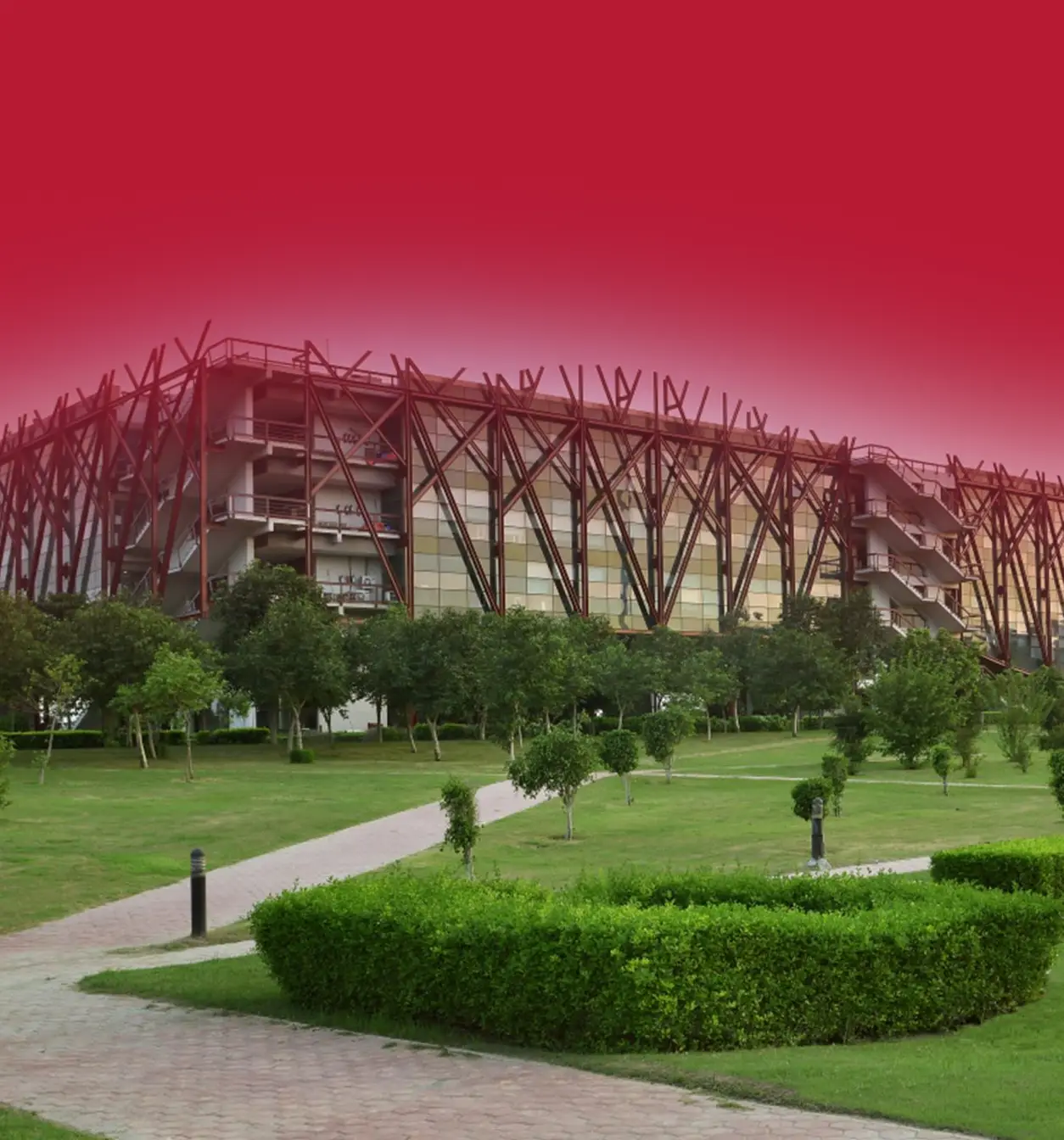Why is everyone all of a sudden so obsessed with fine arts?
According to a study by MRFR, the fine arts market is expected to jump from $11.8 billion in 2023 to $20.3 billion in 2032. On average, it is likely to grow by 9. 3% by 2032. And here’s why getting a degree from one of the best fine arts colleges in India is something the aspirants should keep their focus on.
The concept of art dates back at least 290000 years in India and goes deep into India’s history.
The Timeless Tapestry of Indian Art
Indian art is like a tapestry, woven with creativity, culture, and spirituality. Each era adds its colours to this artistic legacy over the millennia and reflects the essence of civilisation.
Indus Valley Civilization (3300 BCE – c. 1750 BCE):
- Terracotta figurines and intricate seals
- Famous “Dancing Girl” bronze sculpture that exemplifies metallurgical expertise
Mauryan Period (c. 322 BCE – c. 185 BCE):
- The Lion Capital of Ashoka and Sanchi Stupas represent Buddhist thoughts and imperial might
Buddhist and Gandhara Art (c. 150 BCE – c. 500 CE):
- Images of calm Buddhas and syncretism of Indian and Hellenistic styles of Gandhara
Gupta Period (c. 320 CE – c. 550 CE):
- The golden age of Indian art
- Udayagiri Caves and Deogarh Temples depict spiritual ecstasy and divine inspiration
Medieval Indian Art (6th – 13th Century CE):
- Emergence of temple architecture and sculpture
- Examples: Chalukyas’ Badami Temples, Chola bronzes, Khajuraho carvings
Mughal and Rajput Art (15th – 19th Century CE):
- Delicate miniature paintings and architectural wonders like the Taj Mahal and Fatehpur Sikri
- Persian and Indian influences merged
Traditional Indian Paintings:
- Madhubani (Bihar), Warli (Maharashtra), Kalamkari (Andhra Pradesh), Tanjore (Tamil Nadu) with unique themes and techniques
Colonial Era, 17th – 19th Century CE:
- Company Paintings blending European and Indian traditions
- Indo-European architecture in cities like Kolkata and Mumbai
Modern and Contemporary Indian Art, 20th Century Onwards:
- Raja Ravi Varma and Amrita Sher-Gil merging traditional themes with European realism
- Bombay Progressive Artists’ Group leading abstract art
- Evolving art reflecting socio-political narratives, cultural identity, and global influences
Fine Arts Trends to Watch in 2025 at the Best Fine Arts Colleges in India
Moving confidently into the year 2025, we stand on the cusp of a fine arts renaissance. Millennia-old customs merge seamlessly into cutting-edge creativity and are set to be a colorful landscape crafted from strands of scientific progress, cultural reflection and a consistent commitment to social and environmental conscious behavior. At O.P. Jindal Global University, one of the best fine arts colleges in India such transformative trends are already forming the future of art, putting the institution among the finest fine arts colleges in India. Let’s explore the exciting developments that are setting the stage for tomorrow’s artistic landscape at O.P. Jindal Global University.
- Sustainable Art Practices
With climate change being the cry of the day, it’s time for sustainable art practices. The artwork is created using eco-friendly materials and sourcing making sure that they not only appeal to the eye but in fact also awaken a strong sense of love and respect for Mother Earth. Inculcating in society this thought to tread lightly on earth with every passing step that they take as our art becomes an epitome conveying this message of environmental responsibility.
- Art and Mental Health
Art in the realm of mental health is on the rise. The more people feel comfortable talking about their mental health, the more fine art will become an epidemic pervading culture. It will be an art that speaks of anxiety, depression and trauma. It will create space for peace to interact in a world breaking apart, to pause and heal. There will be more teaching opportunities for Art therapists. There will be more funding available to support this kind of work.
- Cultural Preservation and Revival
All these ideas are linked by the burgeoning need to search for and advocate a cultural identity in an increasingly globalized context. In 2025, artists will recall their own history and call upon the techniques of their ancestors to create works that are the embodiment of pride and originality. It is thus the acquisition of those basic techniques that Nalanda University efforts at reviving and preserving the heritage art forms become. These initiatives remind us that the copy is not the promise and the promise lives inside the inspiration. Spanning for decades, students of O P Jindal Global University can stand guard and continue this legacy making it among the best fine arts college in India.
- AI-Driven creativity:
What was once an idea limited to science fiction is now an omnipotent collaborator for artists. By 2025, artificial intelligence will revolutionise creativity, its designers exploring fertility and machines as their co-workers. Any number of avenues of advancement, from advanced digital design to re-invented traditional approaches to color, music and style and beyond, are now opened up as something to innovate as well as exercise creativity with AI tools.
- NFT Art Evolution:
Once considered digital collectors, NFTs are securing their status as fine art in the art world. Authentication uses blockchain technology and designers create unique digital experiences of a designerization data from the environment on a digital canvas from behind. It seeks to democratize art even further and redefine how artists relate to collectors in a new, organic art system. NFT unlocks new unlocks a new frontiers in ownership, collaboration and participation in fine art.
- Hyperrealism:
Surrealism is still compelling for its special power to disrupt the border between reality and illusion. By 2025, the best rock digital photography soft wares, allowing surrealism to out divide itself to new levels, with more new works than almost impossible to believe, witnesses to the finest feats of faculties by the human brain a the imagination reaches often recognized limits and new unremarkable mouths of proof are being explored. But surrealism will keep evolving, so it will provide us with a different view of the world around us.
Opportunities for Fine Art Students:
India is a land of art and culture where heritage, diversity, and expression are intricately woven into the tapestry. For those who dare to dream and create, the realm of fine arts offers boundless horizons. At one of the best fine arts colleges in India, your passion, talent, and skill can find their truest purpose, opening doors to a world of opportunities.
Imagine yourself: shaping stories as a graphic designer, breathing life into characters as an animator, painting emotions as an illustrator; capturing fleeting moments as a photographer, sculpting dimensions as a 3D artist, composing melodies as a musician. The possibilities are endless—to be a cartoonist, architect, artist, and so much more.
The future of fine arts in India glows with promise, bright as the colours on a painter’s palette. India, with its rich artistic legacy and vibrant cultural setting, is at the edge of making indelible marks on the international art platform. The adoption of new tools, promotion of fresh talent, and increasing passion for the art would position the nation to become a creative leader and driving force for innovation. Be the leader and learn to polish your niche at one of the best fine arts colleges in India.
At Jindal Global University, we invite you to embark on this transformative journey. As one of the finest institutions for fine arts in India, we offer a kaleidoscope of opportunities designed to enrich your learning experience and broaden your global perspective.
Step into the world of boundless creativity with the Jindal School of Liberal Arts and Humanities, best fine arts colleges in India —where your artistic vision finds its wings.

